Related Research Articles

The University of Adelaide is a public research university based in Adelaide, South Australia. Established in 1874, it is the third-oldest university in Australia. Its main campus in the Adelaide city centre includes many sandstone buildings of historical and architectural significance, such as Bonython Hall. Its royal charter awarded by Queen Victoria in 1881 allowed it to become the second university in the English-speaking world to confer degrees to women. It plans to merge with the neighbouring University of South Australia, is adjacent to the Australian Space Agency headquarters on Lot Fourteen and is part of the Adelaide BioMed City research precinct.

The University of South Australia is a public research university based in South Australia. Established in 1991, it is the largest university in the state with over 36,000 students in 2022. Its main campuses in North Terrace are co-located with Adelaide's biomedical precinct on its west and the Australian Space Agency headquarters on its east. In mid-2023, it agreed to merge with the neighbouring University of Adelaide, with which it had maintained historically strong ties. The two universities accounted for over 72% of the state's public university population in 2022 and the merger is expected to complete by the end of 2025. The combined institution will be re-branded as Adelaide University.

North Terrace is one of the four terraces that bound the central business and residential district of Adelaide, the capital city of South Australia. It runs east–west along the northern edge of "the square mile". The western end continues on to Port Road and the eastern end continues across the Adelaide Parklands as Botanic Road.

Catherine Helen Spence was a Scottish-born Australian author, teacher, journalist, politician, leading suffragist, and Georgist. Spence was also a minister of religion and social worker, and supporter of electoral proportional representation. In 1897 she became Australia's first female political candidate after standing (unsuccessfully) for the Federal Convention held in Adelaide. Called the "Greatest Australian Woman" by Miles Franklin and by the age of 80 dubbed the "Grand Old Woman of Australia", Spence was commemorated on the Australian five-dollar note issued for the Centenary of Federation of Australia.
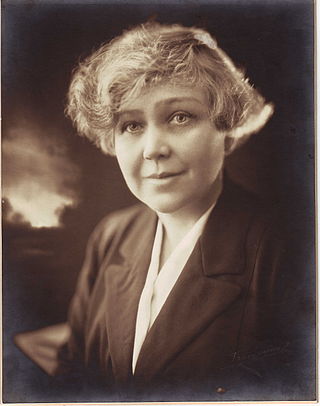
Helen Mary Mayo was an Australian medical doctor and medical educator, born and raised in Adelaide. In 1896, she enrolled at the University of Adelaide, where she studied medicine. After graduating, Mayo spent two years working in infant health in England, Ireland and British India. She returned to Adelaide in 1906, starting a private practice and taking up positions at the Adelaide Children's Hospital and Adelaide Hospital.
Fay Gale AO was an Australian cultural geographer and an emeritus professor. She was an advocate of equal opportunity for women and for Aboriginal people.
Professor Susan Margaret Magarey, is an Australian historian and author, most notable for her historic works and biographies of Australian women.

Women's suffrage in Australia was one of the early achievements of Australian democracy. Following the progressive establishment of male suffrage in the Australian colonies from the 1840s to the 1890s, an organised push for women's enfranchisement gathered momentum from the 1880s, and began to be legislated from the 1890s. South Australian women achieved the right to vote and to stand for office in 1895, following the world first Constitutional Amendment Act 1894 which gained royal assent the following year. This preceded even universal male suffrage in Tasmania. Western Australia granted women the right to vote from 1899, although with racial restrictions. In 1902, the newly established Australian Parliament passed the Commonwealth Franchise Act 1902, which gave women equal voting rights to men and the right to stand for federal parliament. By 1908, the remaining Australian states had legislated for women's suffrage for state elections. Grace Benny was elected as the first female local government councillor in 1919, Edith Cowan the first state Parliamentarian in 1921, Dorothy Tangney the first Senator and Enid Lyons the first Member of the House of Representatives in 1943.
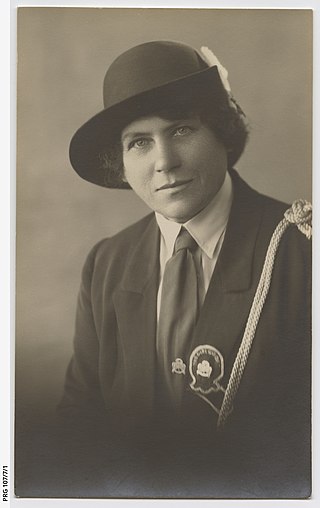
Adelaide Laetitia "Addie" Miethke,, was a South Australian educator and teacher who was pivotal in the formation of the School of the Air using the existing Royal Flying Doctor Service radio network.

Sarah Jane Young was an Australian political reformer.
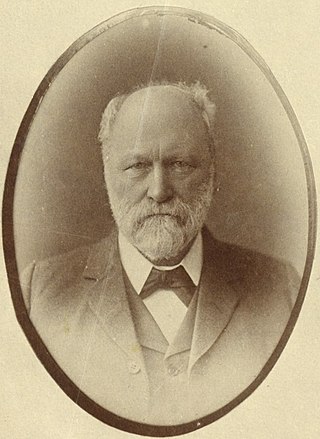
John Brodie Spence was a prominent Scottish-born banker and politician in the early days of South Australia. He was a brother of the reformer Catherine Helen Spence. And the father of Lucy Morice, a kindergarten worker, and social reformer.

https://www.sa.gov.au/topics/education-and-learning/financial-help-scholarships-and-grants/catherine-helen-spence

The Advanced School for Girls was a South Australian State school whose purpose was to prepare girls to qualify for entry to the University of Adelaide. Founded in 1879, the school merged with Adelaide High School in 1907.

Lillian Daphne de Lissa was an early childhood educator and educational theorist in Adelaide, South Australia and the United Kingdom in the twentieth century. She was head hunted to lead Gipsy Hill College in South London, a key part of Kingston University, that spread the ideas of Montessori education and the Dalton Plan.
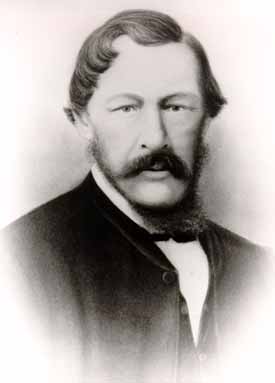
Andrew Murray (1813–1880) was an Australian journalist.

Constance Muriel Davey was an Australian psychologist who worked in the South Australian Department of Education, where she introduced the state's first special education classes.

Elizabeth Anstice Baker was an Australian writer, philanthropist, and social reformer. Born into an Anglican family, she converted to Roman Catholicism and wrote a book about her religious journey, entitled A Modern Pilgrim's Progress. The book was widely read in Catholic circles and was translated into French. She received the Pro Ecclesia et Pontifice medal from Pope Pius X in 1902, becoming the first Australian woman to be honored with this medal.

Emily Dorothea Pavy was an Australian teacher, sociologist and lawyer. In 1912, she became the first Catherine Helen Spence scholarship recipient. While at London School of Economics, she researched the conditions of female factory workers and wrote a thesis named Welfare Work. She died in 1967.
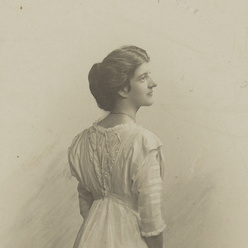
Doris Anne Beeston was an Australian kindergarten teacher. She was a leading figure in the Australian Kindergarten movement. During the second world war she volunteered to be an escort to British children who were emigrating to avoid the conflict. In 1940 she was aboard the MS Rangitane (1929) when it was fired on by German auxiliary cruiser Orion. Ten people died including Beeston. Her memorial included a kindergarten building.

Louise "Lucy" Morice was a kindergarten worker and social reformer from Adelaide, Australia. She was a founder of the Working Women's Co-operative Clothing Company, the Kindergarten Union of South Australia, Mother's and Babies Health Association, and the League of Women Voters of South Australia.
References
- ↑ "Administration of the scholarship and funds". SA Government. Archived from the original on 23 April 2016. Retrieved 22 May 2016.
- ↑ "Catherine Helen Spence Memorial Scholarship". Government of South Australia. Archived from the original on 9 February 2017. Retrieved 17 October 2021.
- ↑ Bourke, Helen, "Emily Dorothea Pavy (1885–1967)", Australian Dictionary of Biography, Canberra: National Centre of Biography, Australian National University, retrieved 10 September 2024
- ↑ "Policewoman Daisy CURTIS". Observer. Vol. LXXXVI, no. 4, 467. South Australia. 2 February 1929. p. 60. Retrieved 18 December 2021– via National Library of Australia.
- ↑ "The Australian woman's mirror". The Bulletin Newspaper. 1924.
- ↑ "ADELAIDE UNIVERSITY". The Mail (Adelaide) . Vol. 14, no. 705. South Australia. 28 November 1925. p. 10. Retrieved 10 September 2024– via National Library of Australia.
- ↑ "Death Of Miss Agnes Dorsch". The Advertiser (Adelaide) . South Australia. 3 May 1937. p. 11. Retrieved 10 September 2024– via National Library of Australia.
- ↑ Jones, Helen, "Doris Anne Beeston (1897–1940)", Australian Dictionary of Biography, Canberra: National Centre of Biography, Australian National University, retrieved 10 September 2024
- ↑ "Remarkable Success Of Catherine Helen Spence Scholar". The Advertiser (Adelaide) . Vol. 96, no. 29, 861. South Australia. 29 June 1954. p. 13. Retrieved 10 September 2024– via National Library of Australia.
- ↑ Knottenbelt, Charlotte (February 2002). "Social work pioneer recognised" (PDF). UniSA News.
- ↑ Australia, Government of South. "Catherine Helen Spence Memorial Scholarship". www.sa.gov.au. Retrieved 10 September 2024.
- ↑ Warin, Megan (2010). Abject relations: everyday worlds of anorexia. Studies in medical anthropology. New Brunswick, N.J: Rutgers University Press. ISBN 978-0-8135-4690-2.
- ↑ Kaeding, Joanne (October 2015). "Opening Access to Public Libraries for Children with Special Needs & their Families". Government of South Australia.
- ↑ "Prudence Flowers". The Conversation. 25 January 2017. Retrieved 9 September 2024.
- ↑ Cork, Rachel (4 April 2023). "Congratulations to Tessa Cunningham for winning the Catherine Helen Spencer Scholarship for 2022". HDR students in focus. Retrieved 9 September 2024.